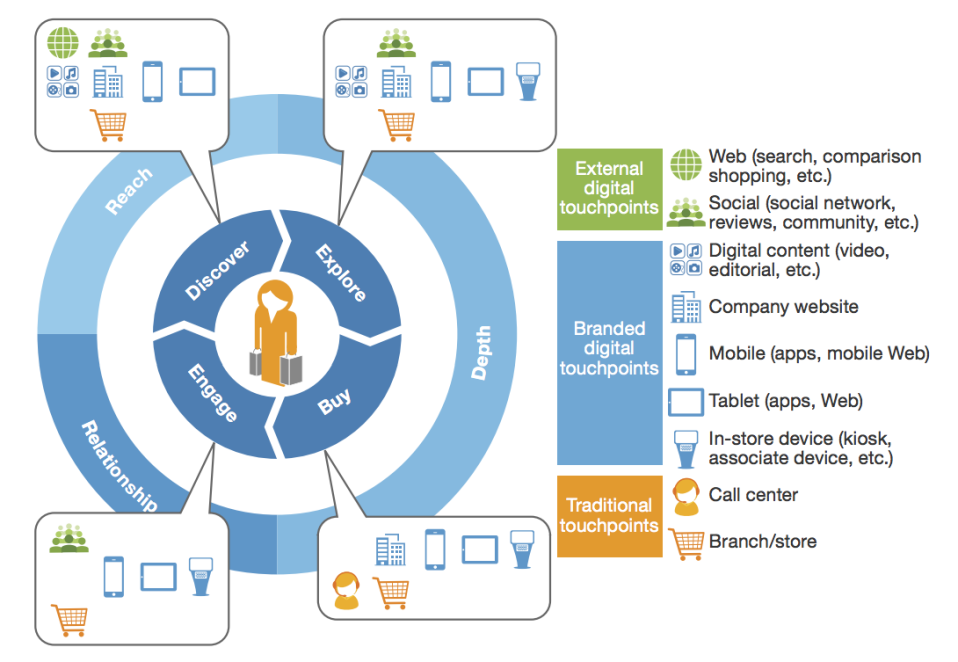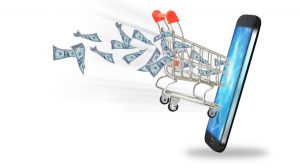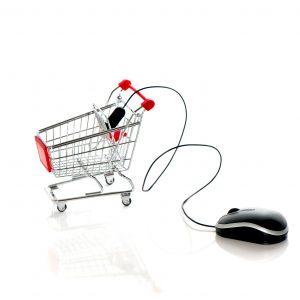Imagine your customer got an email from your company with a coupon code for your online store. She decided to head over to the retail location a few miles away so she could get the product on the spot.
Unfortunately, when she arrived at the store, she was informed that the in-store system doesn’t have her information and she wasn’t able to redeem her discount.
Not only was she left unsatisfied with your brand but she’ll also be less likely to return to make a purchase. In addition, it’s very likely that she’d get sidetracked and never purchase the item.
This and similar scenarios aren’t uncommon these days when customers are interacting with brands via multiple touch points. They expect to move among them seamlessly – able to “pick up where they left off” on the previous channel.
For the past decade, retailers have been focusing on establishing a presence in a variety of channels, such as online, in-app, social media, phone, and in-store. However, such siloed customer experience is no longer sufficient.
Customers not only want to interact with a brand and make purchases on all channels but also have all their information accessible via all touch points so they don’t have to go back to square one when they switch channels.
Onmichannel customer experience integrates all customer interaction in one single database. This means customers can seamlessly move from channel to channel when interacting with a brand. By providing such a customer experience, you will be able to:
- Move customers along their purchasing journey faster and increase your conversion rate
- Nurture leads more effectively by augmenting the quality and relevance of your communications
- Effectively provide customer support to increase customer satisfaction and reduce cost
- Cultivate customer loyalty and increase retention rate
In order to create such an experience, businesses need to switch their fundamental approach to marketing. Instead of focusing on disparate strategy for each channel, you need to turn the attention to the customer.
Customer Centric Marketing Starts With Single Customer View
The creation of a 360° profile of a customer is the foundational element of customer-centric marketing.
This profile is created by gathering information from multiple data sources and moving it into one centralized location so it can be further analyzed and utilized.
The use of a single customer view allows you to:
- Turn your focus on each individual customer to create targeted messaging and offering that will increase conversion and loyalty
- Better predict customer behaviors and be more responsive to market trends and consumer demands
- Make better decisions in choosing new promotional channels
- Use marketing automation more effectively
Going back to our frustrated customer at the beginning of this article, this means she would be able to get an email about a discount and apply it to any retail channel, including online and in-store. She would be able to apply the promotion at the retail location, get the item she wants, and, in turn, be more likely to purchase from the brand again.
Single customer view has been applied by many brands successfully to boost campaign ROI and increase sales. For instance, since implementing the strategy, Speciality Fashion Group’s most recent 200 EDM campaigns have delivered an ROI of 2,200%. Clarins have used a similar strategy to identify VIP and create a sense of exclusivity that makes a selected customer feel special and valued.
Overcoming the Challenges Of Implementing Single Customer View
It’s not always easy to implement single customer view. Consolidating all customer data from multiple channels is one of the biggest challenges faced when implementing omnichannel marketing strategies.
If you have been in business for a while, you know how challenging it is to integrate fragmented customer data collected from different touch points over time to get a complete cross-channel view.
The key to overcoming such data gaps is technology integration, which will give you the ability to collect a cohesive set of data for each individual customer and make it available for further analytics and utilization.
Instead of having to cobble together data from different sources, omnichannel marketers can now bring together all customer information to create a master customer profile with tools such as NectorOM’s suite of solutions to get the most out of their customer information with functions such as data management, customer relationship management, personalization automation, omnichannel hyper-personalization.





![[Case Study] Successful Application Of Omnichannel Personalization To the Restaurant Industry](https://nectarom.com/wp-content/uploads/2017/08/Restaurant-300x200.jpg)













